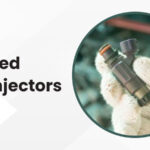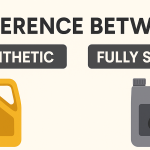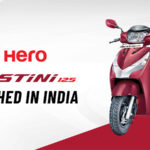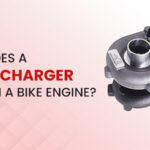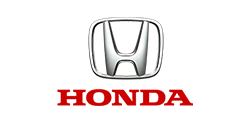The throttle body is one of the most important components of modern motorcycle engine hardware that serves as the primary air controller in the engine. It is, in fact, one relatively easy piece of equipment that helps in determining engine performance, fuel efficiency, and rider control. Understanding its function and significance provides valuable insight into how a motorcycle works.
The Basics of Operation and Mechanism
In general, the throttle body is a mechanical machine controlling the air entering the combustion chamber of an engine. The device is equipped with the housing of a movable valve, which shall be opened or closed in response to the command of the rider by means of the throttle control. When a rider twists the throttle grip, this action is conveyed through a cable or electronic signal to the throttle body for the appropriate opening or closure of the valve.
The underlying principle behind the operation of the throttle body is simple: The more air in, the more fuel burns, hence more power. When ignored, an almost closed throttle allows little air to enter, leading to idle operations. When the throttle opens slowly, increased air enters the engine, where more amounts of fuel can be drawn in and combusted, leading to more power being produced.
Comparing Fuel Delivery Systems
At present, modern motorcycle engines utilize two predominant types of fuel delivery systems: carburetor and Electronic Fuel Injection (EFI). Though carburetors used to be standard in the past, EFI systems consist of the majority of present-day motorcycles, and each makes its own distinctive implementations of the throttle body.
On carbureted motorcycles, it is used for both air regulation and for metering of fuel through the air. The carburetor throttle valve controls the air supply, while jets or channels regulate the fuel supply to be mixed with the incoming air.
In fuel-injection motorcycles, the throttle body is an independent unit whose responsibility is limited to the regulation of airflow. Electronic fuel injectors, normally located quite close to the intake valves, inject a metered amount of fuel as commanded by several sensors. Such independence of air control and fuel delivery mechanisms translates to excellent engine control capability and, hence, provides better performance over a wide range of operating conditions.
Sensors And Electronics in the Modern Throttle Body
A modern throttle body has numerous sensors providing necessary information to the motorbike’s Engine Control Unit (ECU). The most vital sensor of all is the Throttle Position Sensor (TPS), which monitors the actual position of the throttle valve and feeds information to the ECU. It also has idle air control valves for maintaining a stable idle speed under different conditions.
An installed automatic throttle body component would have vehicle controls solely for the automatic control of the throttle body without providing a mechanism to the driver. Therefore, for a ride-by-wire application, the electronic signals to be generated from the driver’s inputs to the ride-by-wire throttle system would similarly be transformed into the electronic signals that the ECU would process to actuate motors in it before opening or closing the throttle.
Effects on Performance and Riding Experience.
It’s not just the actual shape of the throttle body or its method of operation that would estimate the motorcycle’s performance characteristics and rideability. Other characteristics affected by the following parameters are:
- Throttle Response: The engine works more or faster to throttle inputs from visual effects; it is the most purposeful function of the design and layout of the throttle body.
- Power Delivery: The angle of mounting, shape, and diameter of the throttle body all affect the power characteristics throughout the rev range of the engine.
- Economy of Fuel: The result of an ideal control of the throttle body is better combustion and, therefore, better economy. With sophisticated electronic throttle control systems, varied air-fuel mixtures can be delivered for various operations.
- Cold Starts and Warm-Up: Some have certain arrangements meant for cold starting, like special air bypass circuits or variable geometry, warming the engine to its most favorable operating condition.
Design Variation and Configurations
Its configurations and designs employed by motorcycle manufacturers vary according to type, engine make, and applications:
Single Throttle Body vs. Multiple Throttle Body
Most often, these motorcycles, usually multi-cylinder, each have their own throttle body, as the setup is called Independent Throttle Bodies (ITBs). Independent of the rest, it is meant to ensure direct and immediate responses to throttle control and airflow dynamics. This setup is often found on high-performance sport bikes where each one is located immediately upstream of the intake port for that cylinder.
In the simplest terms, the motorcycle has a throttle body and manifold arrangement for good air distribution to the several cylinders. This is practiced most of the time on cruisers, touring motorcycles, and learner setups.
Throttle Body Size and Tuning
One of the very important design choices will be throttle body size. A large one has the potential to flow enough air to achieve high force but gets a little grainy in a good fuel mixture at a low throttle. A small one is good for a nice low-end throttle response and smoothness but could become restricted in peak power.
All these factors must be well-weighed by the designers, depending on the motorcycle’s purpose. An example of a racing superbike can implement larger throttle bodies yielding maximum force, while for a regular bike, a relatively smaller one will give a good performance.
Maintenance and Issues
Like any machine, there can be problems with the throttle body over time. Common problems with throttle bodies are:
- Carbon Build-up: After some time, residual fuel and oil vapors will cause carbon to build on the throttle plate and intake, which leads to stickiness and a rough idle.
- Wear in Bushings and Bearings: Over time, bushings or bearings would be those that would hold the throttle shaft and allow some movement in the throttle assembly.
- Sensor Malfunctions: The throttle position sensors, along with other electrical components, can malfunction, which can cause poor engine operation or a faulty light.
- Synchronization Problems: Multi-throttle body motorcycles require synchronization to run properly, discontinuities can lead to rough running, poor fuel economy, and loss of power.
Routine maintenance is generally cleaning and inspection, with intermittent synchronizing of two throttle bodies with a special tool. Most late electronic controls come with built-in self-diagnosis that gives an alarm before serious throttle problems arise.
Conclusion
The throttle body is an arranged interplay of mechanical design and electronic control systems in all new-generation bikes. It truly is not a simple valve measuring air; rather, it is an extremely complex mechanism that largely affects the performance, responsiveness, and ride-trim characteristics of a motorcycle. While advances in motorcycle technologies will probably continue to push the throttle body forward in other gadgets and features, this primary function of the direct interface between the rider and the power of the engine will still remain the same!



